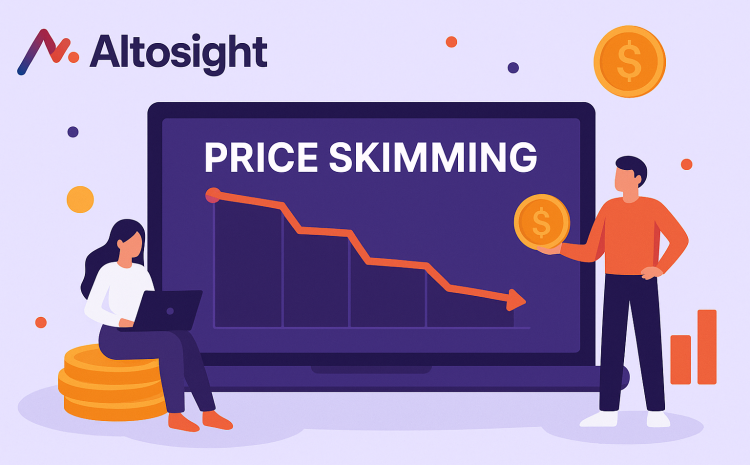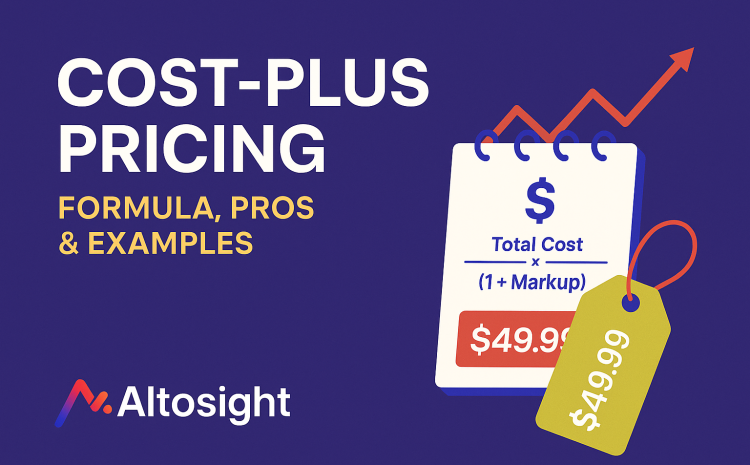![What is Prestige or Premium Pricing [Strategies & Examples]](https://altosight.com/wp-content/uploads/2023/02/What-is-Prestige-or-Premium-Pricing-Strategies-and-Examples.png)
Why do people pay more for a particular product in one store when they can get the same or a similar one cheaper elsewhere?
The answer is perception.
People associate high prices with high quality and exclusivity. That’s where premium pricing comes into play.
It is a pricing strategy that promises high value to the customer in exchange for a higher price for the product or service in question.
In this article, we shall look at the definition of premium pricing, its psychology, when to use it, the pros and cons, and more.
What is Premium Pricing?
Premium or prestige pricing is a strategy businesses use to increase the perceived quality of their products or services. Setting a higher price point than competitors signals to the customers that they are buying something superior in value.
This pricing strategy is typically used by brands that cater to a customer base seeking premium products. It is also used when a product has superior technology, higher material quality, or patented features.
The idea behind prestige or premium pricing is to create an impression of exclusivity, luxury, and higher quality. By charging more, companies can signal that their product has greater worth than their rivals.
Also, having higher prices often translates into better margins for business owners allowing them to invest more resources into their products and services, resulting in an improved customer experience and better future products.
People Associate High Prices with Quality
When making a purchase, people want the best value for their hard-earned money. So they associate the high-priced option with the best quality. The belief is that since a product costs more, the manufacturer uses higher-quality materials and devotes more effort to designing it.
Also, people often view higher prices as a sign of prestige or luxury, which can add to the item’s perceived value.
Some consumers will prefer to spend $400 on a t-shirt if they think it is of better quality or from a designer brand, even though a similar one could be found for $45 elsewhere. For example, Mark Zuckerberg’s famous t-shirts may look simple but they cost between $300 – $400.
Businesses use premium pricing strategies to differentiate from the competition and increase perceived value and sales. This can be seen with things like luxury cars or designer products, which have high prices but also a reputation for being made from excellent materials and craftsmanship.
Consumers may not know the specifics about why these items cost so much, but they assume their price point guarantees a certain level of quality.
Advantages and Disadvantages of Premium Pricing
Advantages
- High-profit margin: This is the most obvious benefit of adopting this pricing strategy. Businesses with premium pricing strategies will have a higher profit margin. For example, Apple was the most profitable brand in 2022. They have loyal customers willing to pay a premium for their products.
- Enhanced brand perception and value: An expensive product is usually part of a more robust marketing campaign that emphasizes your position as a high-end luxury brand. People expect such products to be pricey. Consumers will be happy to pay a premium price if your brand image matches the price tag. That’s why Apple can consistently raise the prices of new products over the years.
- Competitive advantage: Premium pricing helps companies fend off their competitors. The amount of money and energy put into advertising premium-brand goods makes it virtually impossible for new businesses to enter the market without investing the same amount.
Disadvantages
- High cost of branding: The costs of establishing and maintaining a premium pricing strategy are considerable and must continue throughout the lifetime of the approach. Otherwise, the company will have trouble maintaining its price points and will lose its premium brand recognition.
- Small target market: Brands that use a premium pricing strategy have a limited target market because their products aren’t affordable for most people. For instance, only a small market can afford a premium car like a Ferrari.
- A high cost per unit: A low-volume producer cannot achieve the cost reductions (economy of scale) that a high-volume producer would.
When to Use Premium Pricing
While many businesses will like to adopt prestige pricing, it may not always be the best approach. This pricing strategy depends on several factors, including product type, demographics, and the brand’s reputation. The ideal situation for adopting premium pricing is:
To create a sense of luxury
Brands that target the top tier of the market will use a premium pricing strategy to appeal to them. A brand like Louis Vuitton, for example, understands that most people can’t afford their high-end products. But that’s their goal — to be attainable to only a select few.
Rare or hard-to-find products
Products inaccessible to many people can be viable candidates for a premium pricing strategy. For instance, limited edition cars like the Lamborghini Veneno, built to commemorate the Italian powerhouse’s 50th anniversary, cost $4 million each.
Offering a unique experience
Premium brands usually go to great lengths to differentiate themselves from the competition. They do this to assure customers that they are getting value for their money.
For example, Michael Kors, a fashion brand, launched #InstaKors, which allows users to shop on the brand’s Instagram account. When a user double-clicks an Instagram image with the #InstaKors hashtag, they will receive an email with a direct shopping link. The result is a seamless shopping experience for customers.
First-mover advantage
Premium pricing can set the benchmark in a category for brands with first-mover advantage or early introductions.
6 Tips to Create a Premium Pricing Strategy
Adopting a prestige or premium pricing strategy isn’t a simple matter of setting prices high and expecting customers to pay up. If you price your product higher than the market average, you must make a case for it.
Here are some tips to help you create a successful premium pricing strategy:
1. Align your value with your price point
Even if your target demographic expects to pay a premium, you must ensure your product is worth the extra cost. These can include features, design, durability, or even after-sale service.
2. Establish a visual identity that supports your pricing positioning
Your marketing and branding efforts should be designed to reinforce your premium pricing strategy. Take Apple, for example; everything about the brand visualizes a high-end product — from the quality of their advertisements to the packaging, it passes the eye test.
3. Offer a unique user experience
Getting people to pay a premium is a two-way street. You need to offer a unique experience at every step of the funnel so that they have enough reasons to justify their purchase.
As a result, more touchpoints are necessary, and each of them will need to work in harmony to provide a seamless customer experience. So, a consistent strategy must be in place from your website to social media pages.
4. Use tailored brand messaging
Make sure your branding appeals to the target market you’re aiming to attract. If you’re targeting luxury consumers, make sure your messaging reflects that. One brand that excels at this is Tiffany & Co.
The luxury jewelry brand connects with its target audience through a witty, elegant, and classic brand voice. Their content marketing and social teams collaborate to ensure the brand voice synchronizes across all platforms.
5. Create exclusivity
An effective premium pricing strategy involves limiting supply as well. Although having your product widely available might seem a good idea initially, the long-term benefits of generating enthusiasm for products with limited distribution outweigh this short-term revenue spike.
Your brand will be more attractive to consumers if you smartly constrain supply to increase demand. However, you must find a balance. If people cannot get your product, you will lose customers.
6. Avoid promotions
Using premium positioning and pricing today, dropping it tomorrow, and then picking it back up the following Monday isn’t sustainable. If your niche market focuses on exclusivity and quality, you give away exclusivity by dropping your prices with promotions.
Furthermore, promotions diminish the prestige brand associations you build over time irreversibly.
For example, Louis Vuitton does not have sales or outlet stores. It is most likely fake if you find heavily discounted Louis Vuitton products online.
Premium Pricing Strategy Examples
Apple
Image from Pexels
The line of products manufactured by Apple is synonymous with luxury. Apple has maintained its premium positioning by consistently creating new and innovative products.
Although many brands have made strides to match Apple’s technology for the iPhone and MacBook over the years, they still get a significant market share.
Many Apple products cost more than their competitors. Yet, it still has a loyal customer base. It shows how Apple has successfully implemented the premium pricing strategy and its market position.
Rolex
Swiss watchmaker Rolex is famous for its exquisite designs and superior products. And the brand has been able to maintain its premium positioning for years and achieved significant profits. This is a result of its loyal customer base and quality.
Rolex’s success has also been boosted because watches have become style statements rather than sheer utility items.
Mercedes-Benz
Image from Pexels
Mercedes-Benz is a luxury car brand that has existed since the early 1900s. The company has always been known for its high-quality and luxurious vehicles. It is also one of the few car brands that offer a wide range of models, from small city cars to luxury SUVs.
To maintain its premium positioning, Mercedes-Benz has to continue to develop new and innovative models. Also, the company must ensure that its vehicles meet the highest design, performance, and safety standards.
Key Takeaways
A product is worth what the customer is willing to pay for it. But brands can guide the buyer to pay a premium by positioning themselves and their product in a way that depicts high value.
This means that the brand must continuously be innovative, ensure that its products meet the highest design and performance standards, and keep the customer base loyal.
A premium pricing strategy can boost a company’s sales and profits. However, it is not for every business. Before adopting a pricing strategy, understand your target market and monitor your competition.
Altosight is a valuable tool for tracking your competitors’ pricing. Our AI-driven price monitoring tool tracks competitor prices and retail price violations for manufacturers and eCommerce stores.





